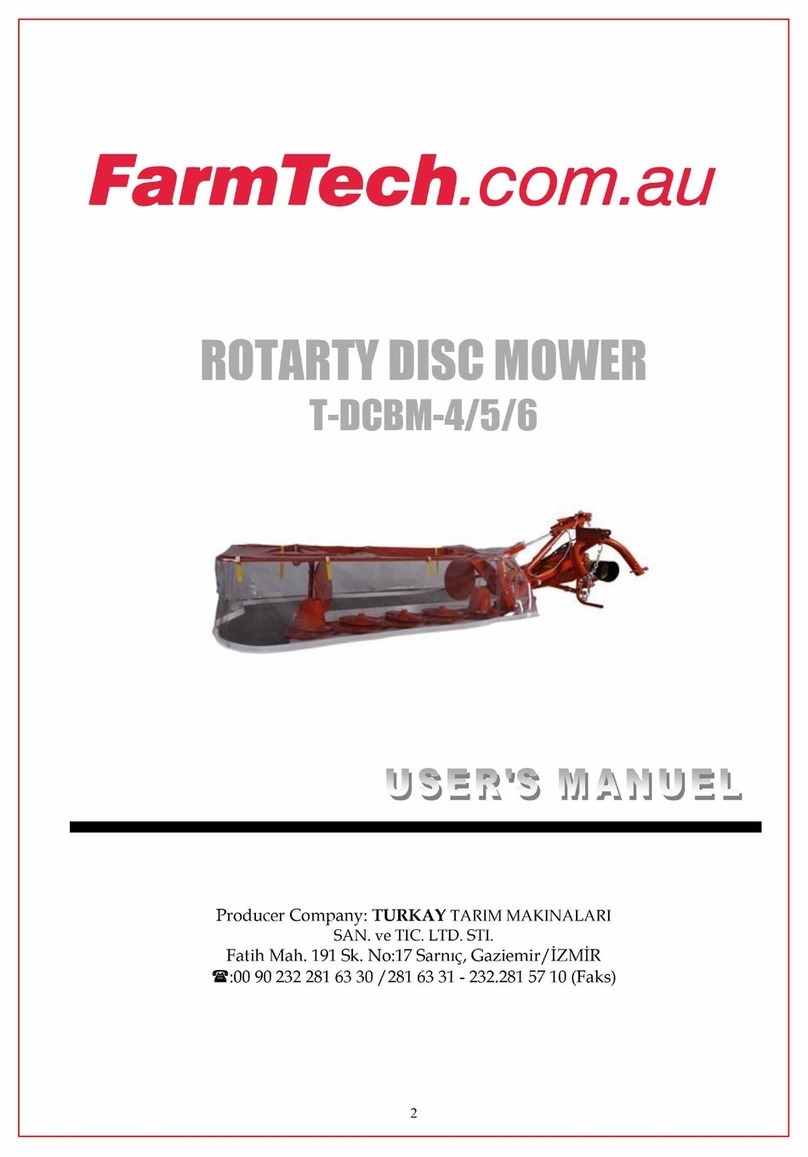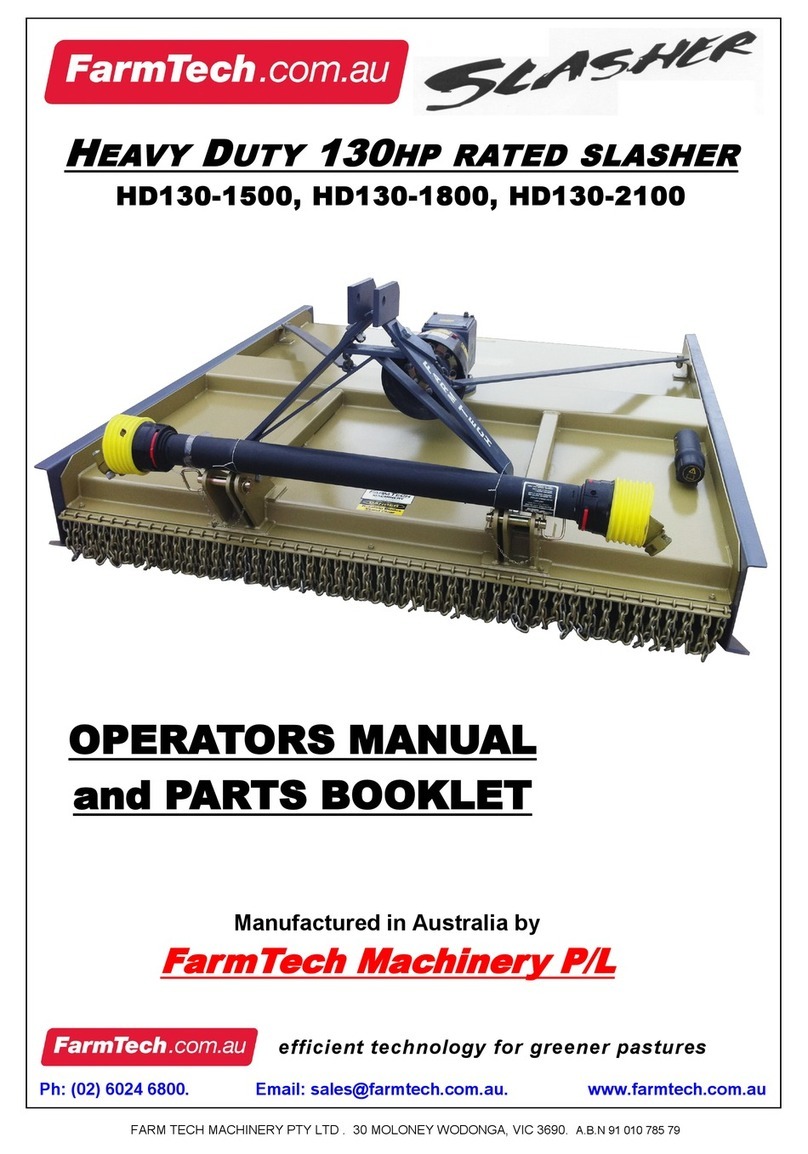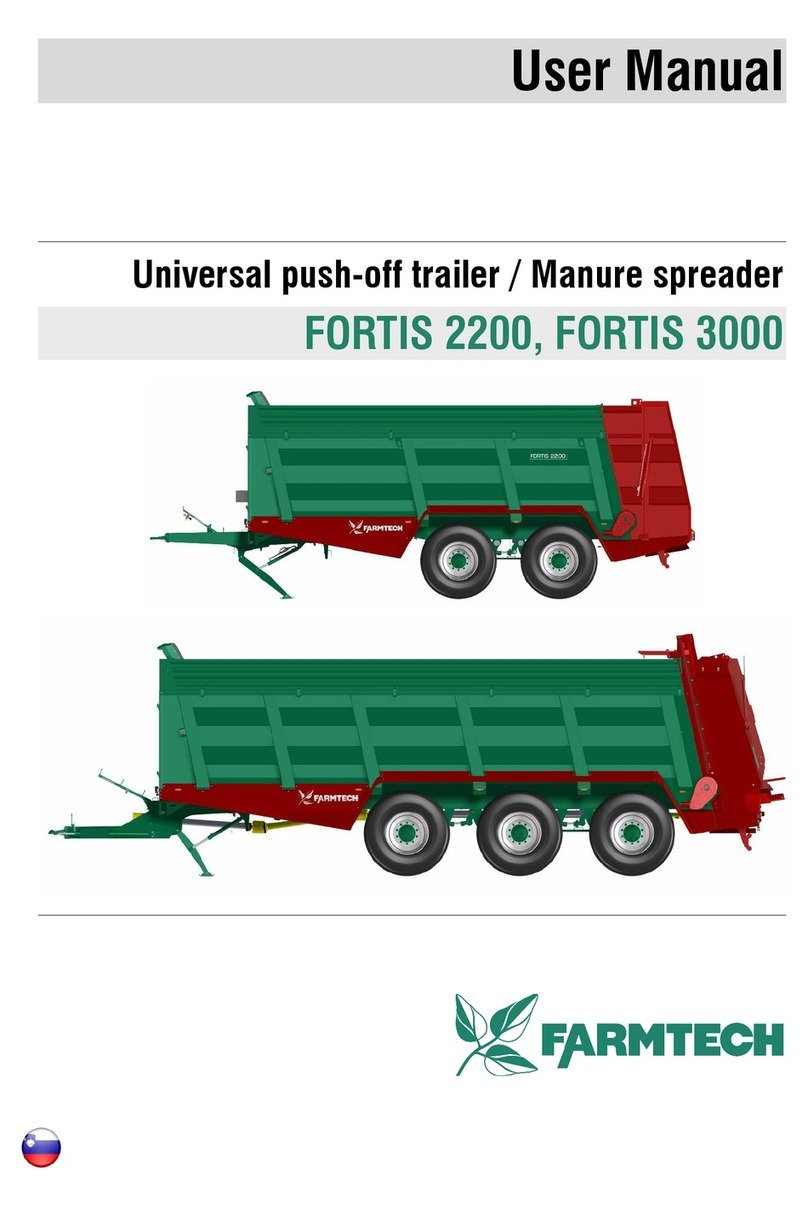A.2.1.1 Introduction
37 of each 100 fatal accidents occur in agriculture industry. Compared to other business
lines, this ratio makes farming the most dangerous business line today.
The significant part of the accidents experienced in the agriculture industry is caused as
a result of users failing to obey the “safety rules and instructions”.
Agricultural equipment works in conjunction with tractors. In this respect, the two
machines cannot be considered separately. Therefore, knowing the fundamental rules
and instructions for tractor use are as important as knowing the safety rules and
instructions for the use of agricultural equipment.
With this awareness, it is important to know the instructions of use of both
products to prevent potential accidents.
A.2.2.
Safety Rules for Tractor Use
1.
Tractor must only be used by a driver who has a driver license and is trained.
2.
Maintenance and operating manual must be read carefully before using the tractor.
3.
Roll-Over Protective Structure (ROPS) must be on tractor.
Do not use a tractor that does not have a roll-over protective structure (RPOS). The
ratio of the accidents and roll-overs resulting with death by using the tractors without
ROPS are significantly higher compared to the tractors having it. Thus, the use of ROPS
in the tractors without cab has been mandatory in our country since 2001. If a tractor is
used without ROPS it is very dangerous and it is highly recommended to install a ROPS.
4.
In order the ROPS unit on tractor to be effective at the time of roll over, it has to be
used with a safety belt. Hence, safety belt will keep you in the safe zone at the time of
accident and roll over.
Therefore, the safety belt measure must be taken during the use of any tractors
with/without cab. This measure prevents you to be tossed out of the window or cab in a
potential accident.
5.
Check the ROPS unit from time to time and ensure that it is not cracked or broken.
6.
The noise level generated when working with machines makes the verbal
communication difficult. Therefore, using a common sign language among employees
is important. Where it is not possible to develop a common sign language, it is mandatory
to obtain unity in this subject to learn at least the statements such as “stop the engine”,
“slow down”, “lift the equipment”, etc. of hand signals for emergencies.































